Weekend Snaps
A more personal blog on last week at Design Matters, DREAMSCAPE_MINI and more.
Hi folks! CJ here.
I’m experimenting with a more personal newsletter this month. mabbees and I will be at QGCon in Montréal next weekend, and to celebrate that, all of our games are 20% this week.
Please enjoy our newsletter.
I. Design Matters, Tokyo.
This weekend, I spoke to a global audience on the Design Matters Tokyo stage on sociocracy and how we implement fair distribution of power in Studio Terranova in our work. It was called "Designing a Hopeful Future."
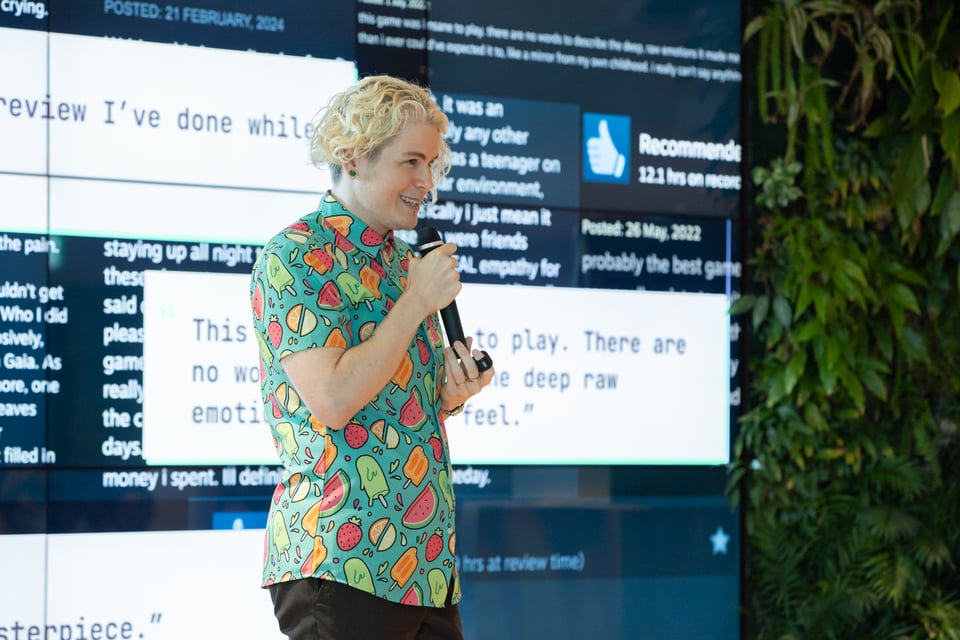
Design Matters kindly re-published my previous articles on sharing power to their magazine, which you can read here:
It was such an honor to speak. Most design conferences I've attended focus on solely software design, but DMT had a mix of professions - from game developers to engineers to artists to community leaders.
There were talks and workshops on the future of open source software, what ethical consumption of AI looks like (if there is ethical consumption at all) and, my favorite, opti-pessimism, where we design spaces to be used in both the best case scenario (what if it goes viral?) and the worst case scenario (what if it is used for abuse?).
(During this conference, I found out about Cheryl Platz’s new book on game development that discusses opti-pessimism, The Game Development Strategy Guide.)
Since 2022, I'd felt ethically adrift from the Silicon Valley design community which seemed to me more interested in chasing recent trends as "the future of XX" than tackling societal issues. At interaction 22, Pablo Stanley, whose work I had fallen in love with because of his loose doodles and candid sharing of his hopes and fears as a designer, gave a keynote talk cajoling UX designers to start investing in NFTs. It was like watching a friend become entangled in a multi-level marketing scheme.
Is this what designers have become? So entangled in "developing their personal brand" that they've convinced themselves the world needs another Bored Ape? I thought.
I came into design inspired by the likes of Bret Victor, Cennydd Bowles, and Victor Papanek who, first and foremost, were inspired and grounded by the world around them. Papanek went on walks and studied the patterns of falling helicopter seeds as inspiration for actual fan blades; Victor designed an embodied computer that was made out of projection mapping that people could operate with their hands. They sought to make digital technology something that enhanced the awe of the physical realm, and not manufacture it.
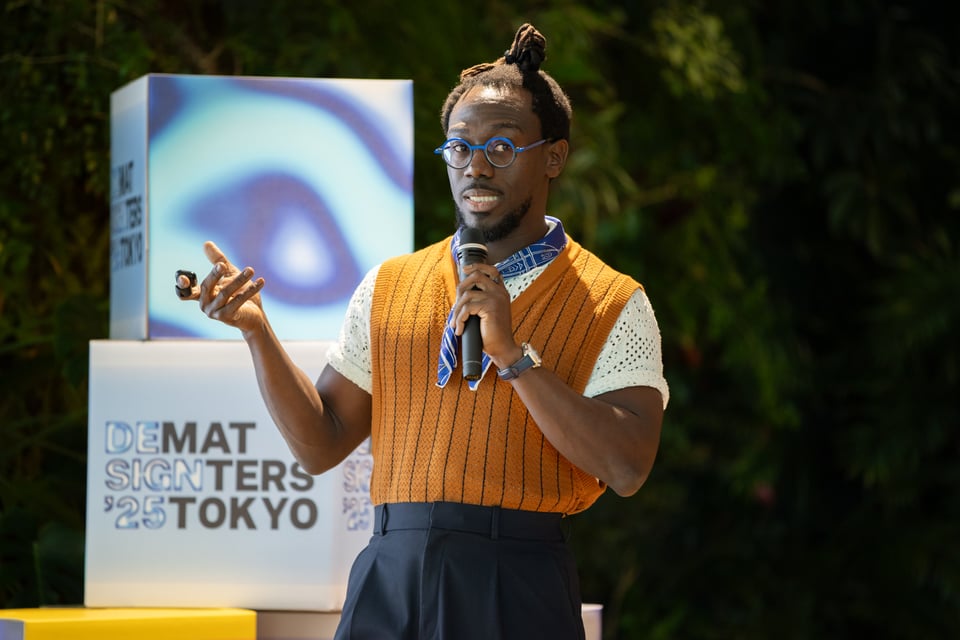
It's the reason I like making games and organizing—it's one way to enhance the awe and playfulness of others.
My everyday work at Studio Terranova is less awe-inspiring. When mabbees and I founded Studio Terranova as a legal entity, I learned about Articles of Incorporation, contracts, and tactical information about starting a LLC in Japan. Most business structures, I realized, have not been designed to support cooperative work, likely because from a legal perspective, it is better to have the burden of responsibility on one person or a group of people than the entire company—it's easier to know who is beholden to whom.
I also realized, sadly, how much of small business here in Japan is supported by the invisible labor of women. It is relatively common for male CEO's to found a company and then, since his wife is volun-told to do the bookkeeping and accounting for the company while he chases clients. When mabbees and I went to a seminar on accounting for small businesses in Japanese, they made a joke: 「奥さんがいらっしゃらなければ、ビジネスとして大変」or in English, "if my wife wasn't here, it would be hard to operate (as a business)."
These are also not unique to Japan—cooperatives struggle with legal structures and women still struggle with being asked to do volunteer work at the office while their male counterparts seem "too busy."
I struggle writing about either of these because of information exhaustion and my own insecurity (I'm not an expert in cooperatives—I'm an expert in design). I detest unfounded confidence in others, moreso in myself.
But listening to everyone's open discussions and how freely they admitted to not knowing made me realize I should firstly—get some rest to soothe my brain that's been working overtime since founding the company, and secondly, organize my thoughts in a way that others can read and learn from.
Thank you to everyone whom with I had excellent, thought-provoking conversations. It helped me realize I'm not alone and that the things I've been learning about running an organization effectively could also help others who don't want to become managers or employees, but rather, co-owners.
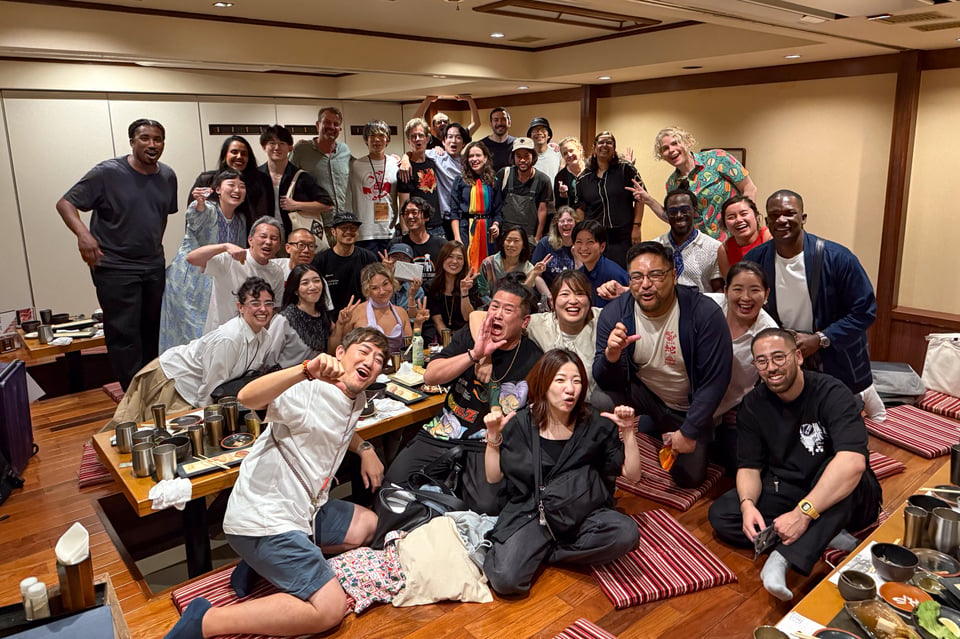
II. DREAMSCAPE_MINI, Awara Onsen, 3.5 hours from Tokyo.
After a two-day weekend Design Matters folks in Roppongi, I hopped on a train to Awara Onsen in Fukui on Monday to run a workshop on bitsy at DREAMSCAPE_MINI, a tinier version of DREAMSCAPE. Tokyo, Osaka and Kyoto tend to be the big hubs in video game design, so a games workshop in Fukui was rare. Over 25 people were in attendance; mostly families with their kids.
I was nervous. Kids are the toughest audience to impress.
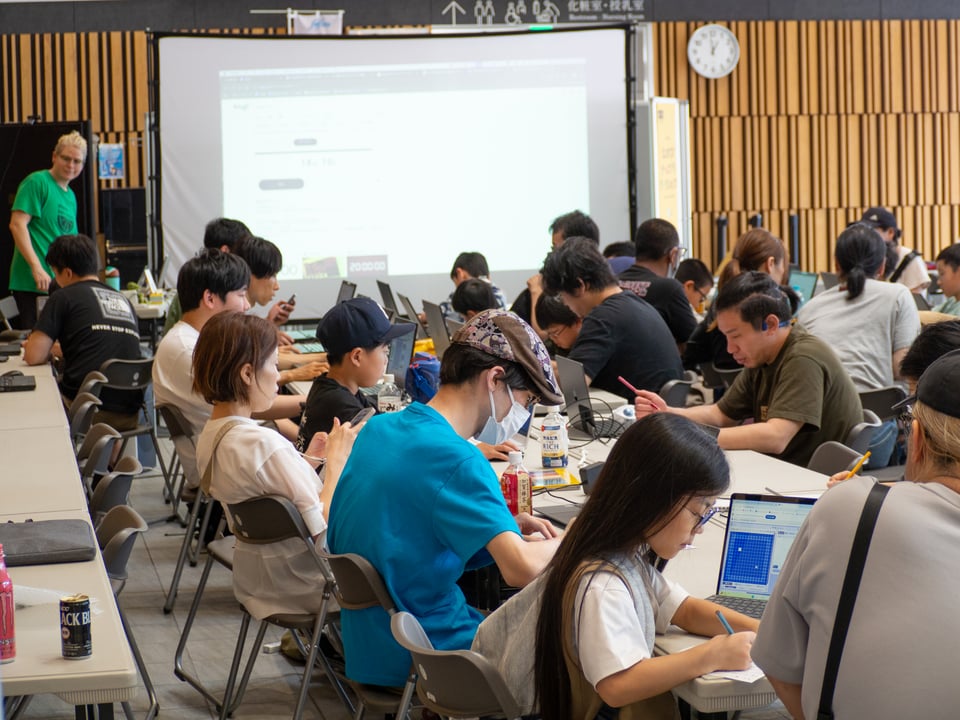
The very first games I made in college were fun to make, but not fun to play. They were, like most first games, a collection of things I thought were cool. I liked Super Smash Brothers and I also liked BL (boy's love) so some of my first games I made were pretty boys fighting either their inner demons or each other.
Adults would politely play my edgelord games and say it was neat; kids would look at me and ask why I made a boring game. I had to build about five or six games in total before a kid told me my games were fun. Even Terranova, I warn parents, is not for kids. Not for the content alone; but because it requires the player to sit and read it like a book. Only certain types of kids (and adults) can handle that level of concentration for an extended period of time.
Teaching them bitsy, a tool that does not, to my knowledge, have extensive Japanese documentation and is only three colors, I reasoned, would either excite the kids or bore the hell out of them.
"Let me start by asking...what's your favorite video game?" After I few moments of silence, some hands shot up.
"Mario Kart!"
"Roblox!"
"Undertale!"
The workshop was a hit. The kids loved bitsy. Even though the interface wasn't completely translated into Japanese (even upon selecting the language in settings) it was enough for people to follow. It was intuitive and people loved the fact it was a web browser and could be accessed via smartphone.
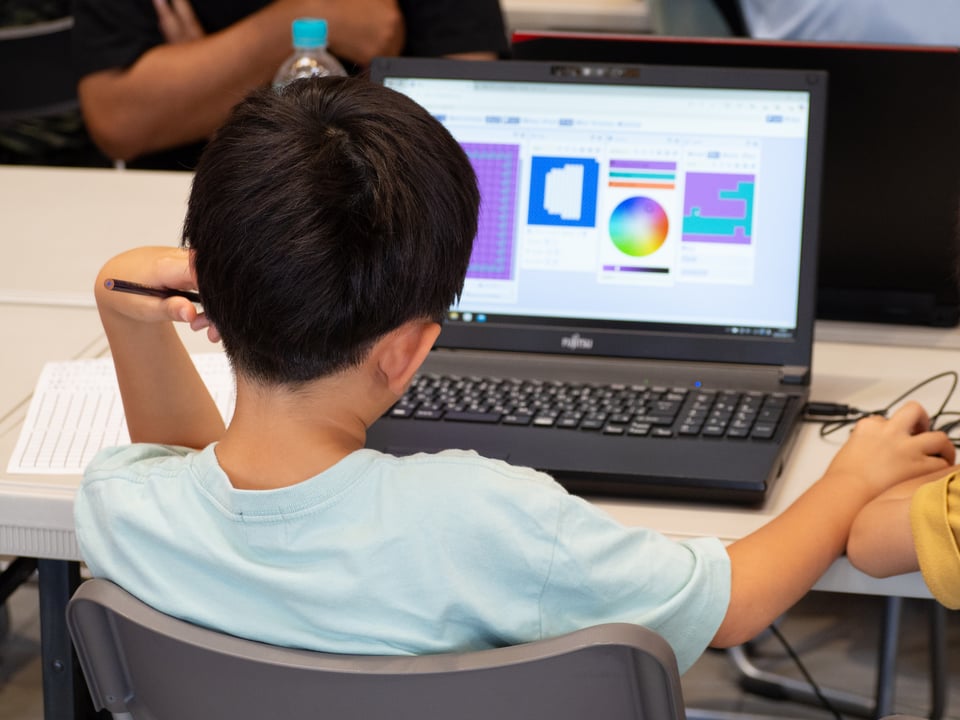
I designed some 8x8 graph paper so that anyone who was too overwhelmed by computers could still make their own avatars. I did this at Global Game Jam in 2024 and it was a hit; I asked people to draw their bitsy sprites on paper and I manually inputted them into the game. I didn't have to worry too much about them being overwhelmed—they were already poking around bitsy and changing the colors, designing their own avatars and sprites.
I was impressed with what they made in two hours—old school adventure games, story games, a game where you walked around a lake—they were all very unique. A few kids even started adding logic and variables to their games, like: 'if the player has a key, let them unlock a door.' The adults were fascinated by the SFX and music maker.
An interesting thing I learned during the workshop was this:
Almost all Americans who give presentations in Japan are very self-conscious, myself included. Whether we realize it or not, Americans love praise. We enjoy reactions; laughing, booing, raising hands and answering questions. Robin Williams famously hired a studio audience to laugh at his jokes when he shifted from stand up to acting because he lost confidence when he couldn't hear laughter.
Most audiences in Japan are prepared to politely and silently listen. Calling on participants for answers will, at first, be met with blank stares and averted eyes.
The answer isn't to remove all the interactive parts—it's to accept that the first few questions I ask will go poorly until the audience catches on that their participation is encouraged and welcomed. Most people enjoy being asked questions about themselves, especially if there is no wrong answer.
I can usually stave off my desperate need for praise for at least fifteen minutes, which in that time is enough to encourage the audience to interact with me and each other.
After the workshop, I chatted with some of game devs that were exhibiting; folks from Kansai that had made their first game, or had made a jam game they were polishing. I saw in them the excitement I see at Let's Games! Tokyo when people watch other people play their game for the first time.
DREAMSCAPE_MINI was a very different vibe shift from Design Matters—these game devs weren't established, but working either solo or in teams on pet projects. They'll soon be the next indie game developers here in Japan.
I wish them the very best.
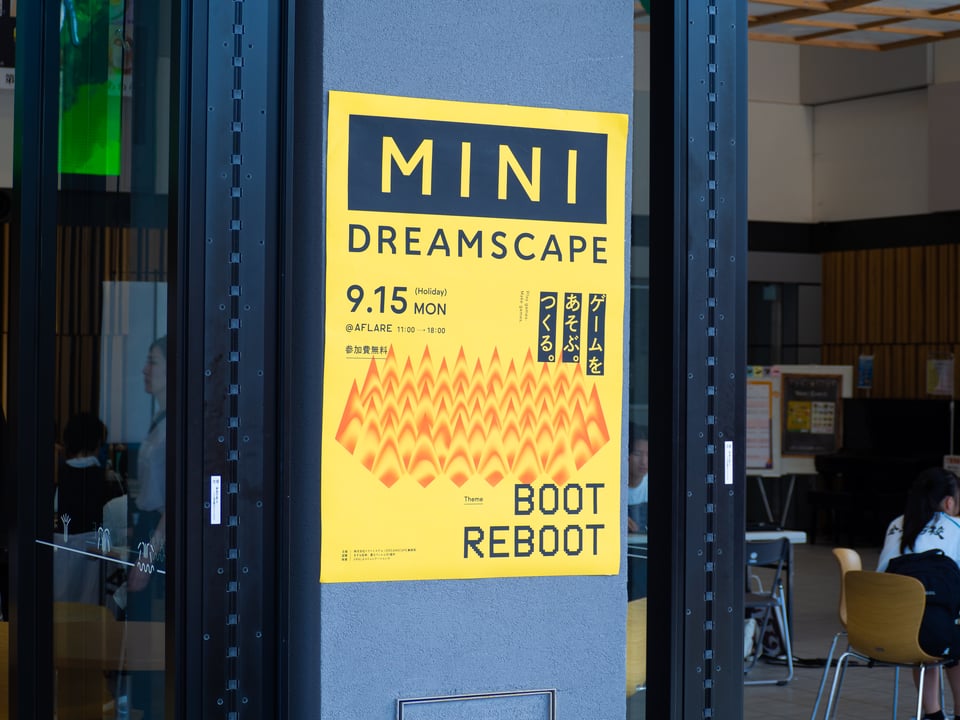
III. Rest. Awara Onsen Yu-no-Machi, 20 minutes away.
Awara Onsen is a lovely hot springs town a train ride away from Fukui. Coming from a major city, I was surprised by how car-dependent Fukui is; but Awara Onsen has done a good job of making itself accessible to tourists. There's a taxi program called Gurutto Taxi that lets you shuttle from various tourists spots for 600 yen one way.
The architecture is modernized showa retro. Showa retro is architecture and style from the Showa period (1926-1989) which usually includes cherry or mahogany wood, red or emerald velvet, and crystal ashtrays for smoking or elegant stemmed glasses for drinking. Nowadays it's back in style, but most hotels that are built in the Showa era are replete with peeling wallpaper and a vaguely smoky smell.
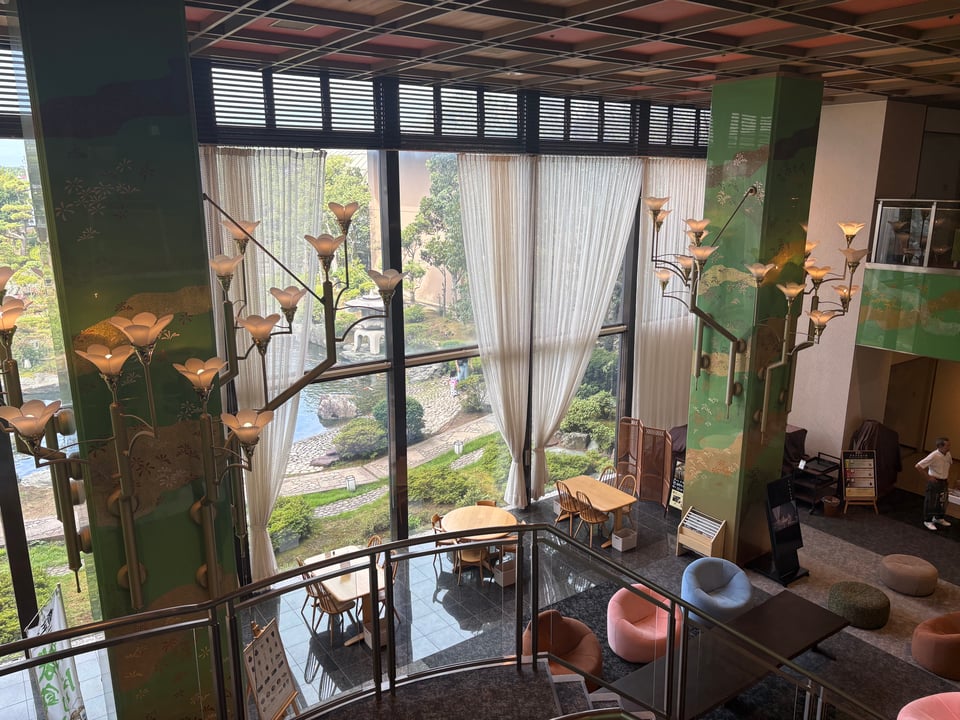
The hotel I stayed at had clearly had gone through remodeling. It kept some of the gorgeous architecture—ceiling to floor windows and an impressive garden—but updated it with chic, modern furniture. I cooled my heels at a lovely foot bath in the morning; impressed at the locals who were reading the morning newspaper while soaking their feet in 51 degree celsius water.
I opened up a new book; one that I'd checked out from the library by Devon Price called Laziness Does Not Exist. How timely this book was for me, after three straight days of jetsetting around and being a Person on Stage. Before all these events I’d gotten vaccinated + masked. Next week I would be flying to a COVID-conscious event in Canada.
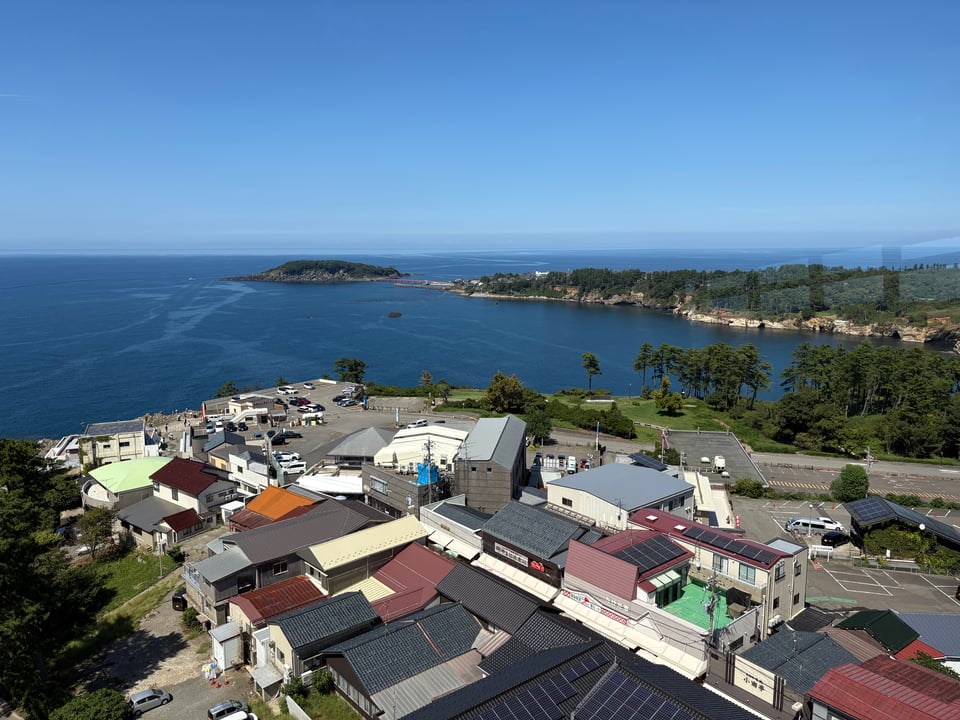
Tojinbo is a nearby a coastal town with a beautiful view of the ocean between Japan and China. I headed up to the air-conditioned observation tower to sit down and read amongst some retirees.
"We have all been lied to about laziness. Our culture has us convinced that success requires nothing more than willpower, that pushing ourselves to the point of collapse is morally superior to taking it easy... The people we've been taught to judge for 'not trying hard enough' are almost invariably the people fighting against the greatest number of unseen barriers and challenges."
Being a creative and taking a more "self-determined" path means that I'm constantly exposed to the pressure of not doing enough. Not enough marketing, not enough contacts, not enough work being produced to satisfy myself. I put a lot of effort into my client work; on the weekends I run high-effort events. I find time to do game development in weeknight pockets when I’m not sleeping or exhausted.
I am the farthest from our society’s definition of laziness there is. And yet, the compassion I afford to my chronically ill friends I don’t to myself.
I’m so looking forward to going to Montréal. I don’t know if it will be completely restful, but it will be a space to be present and savor the moments there. The more I skip over the kind memories, the loving memories, the memories where I felt true connection, less I can remember them.
The less I remember them, the less connected I feel to this world. And more than anything, I want to stay connected to here.
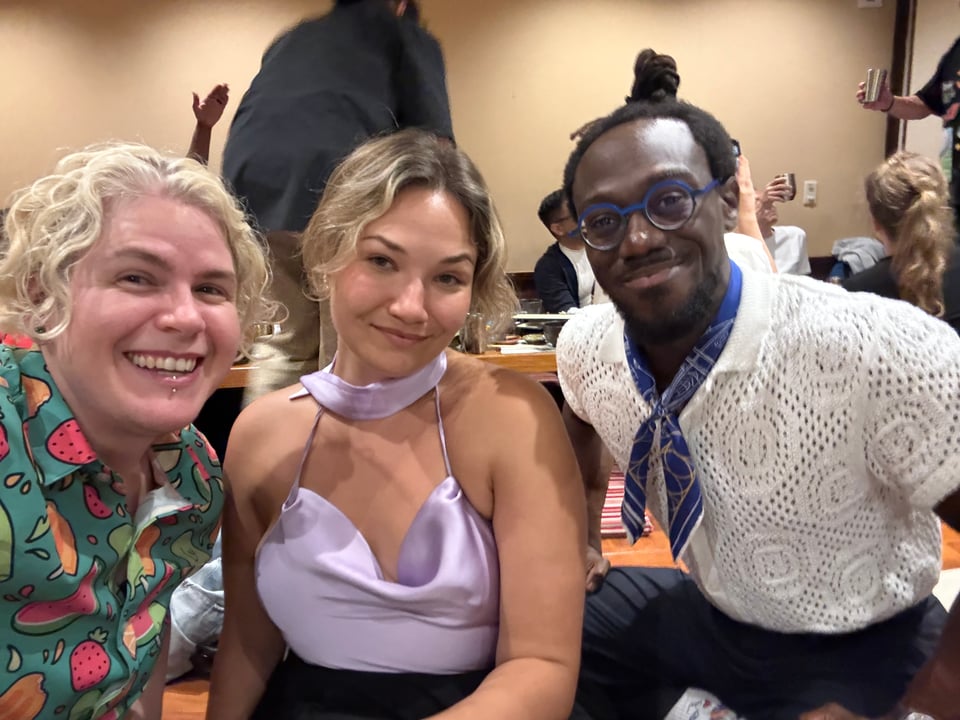
I hope you enjoyed this month’s newsletter. Some quick PSA’s…
Join our newsletter + Ko-Fi
Thank you to our current Konbini Coffee Club members who are supporting us on $1.50 USD a month.
I know there’s a lot of subscriptions out there, but your support would mean the world to us. With your subscription, you can access all back issues of our newsletter.
You can join as a Konbini Coffee Club member ($1.50/month) or for free below.
From the Discord
We run a chill little Discord with folks all over the world. We’re 18+, pro-ship, like indie web and dev projects, and are welcoming of queer and adult artists (and those who support them).
Here’s some cool stuff that was shared recently:
You can join us here. (18+ only, please.)